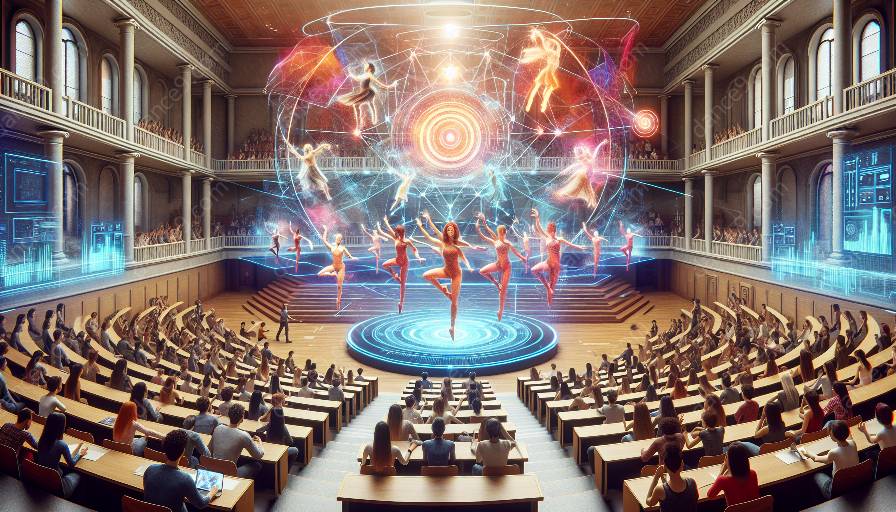Virtual reality (VR) has emerged as a groundbreaking technology with the potential to revolutionize interdisciplinary dance projects at universities. By integrating VR into dance, educators and artists can explore a dynamic and immersive approach to creative expression, choreography, and performance. The intersection of dance and technology offers a fertile ground for innovation and experimentation, inviting students and faculty to push the boundaries of their artistic practice.
Exploring New Frontiers in Dance Education
At the heart of integrating virtual reality into interdisciplinary dance projects lies a commitment to innovation and exploring new frontiers in dance education. By harnessing VR technology, students can engage in experiential learning that goes beyond traditional boundaries. They can explore new ways of conceptualizing movement, space, and embodiment, leading to a deeper understanding of choreographic principles and an expanded expressive range.
Merging Physical and Virtual Realities
With VR, dancers and choreographers can merge physical and virtual realities, creating a seamless blend of corporeal expression and digital immersion. This fusion allows for the creation of performances that transcend the limitations of traditional performance spaces, transporting audiences to imagined worlds and evocative landscapes. Through this integration, dance becomes a multisensory experience that engages the audience on both physical and emotional levels.
Enhancing Collaborative Opportunities
Integrating VR into interdisciplinary dance projects at universities fosters enhanced collaborative opportunities across disciplines. The technology invites dancers, choreographers, designers, and technologists to work together in a symbiotic relationship, merging their expertise to create innovative, boundary-pushing works. This interdisciplinary collaboration encourages the exchange of ideas and skills, enriching the creative process and broadening the artistic vision of all involved.
Pushing the Boundaries of Artistic Expression
The integration of VR in dance projects pushes the boundaries of artistic expression, opening new possibilities for exploring movement, narrative, and audience engagement. The immersive nature of VR allows dancers to inhabit new worlds, inhabit avatars, and experiment with spatial dynamics in ways that were previously unattainable. As a result, dance becomes an inventive and dynamic form of storytelling, engaging viewers in novel and extraordinary experiences.
Preparing Students for the Future
By incorporating VR into interdisciplinary dance projects, universities equip their students with valuable skills and experiences that are highly relevant in today’s digital landscape. Students gain proficiency in utilizing cutting-edge technology, honing their creativity, and developing a nuanced understanding of the intersection between art and technology. This prepares them to be versatile and adaptive practitioners in a rapidly evolving cultural and technological environment.
Embracing Innovation and Creativity
Ultimately, the integration of virtual reality into interdisciplinary dance projects at universities represents a bold embrace of innovation and creativity. It challenges conventional norms and encourages a reimagining of the potential of dance as an art form. By exploring this intersection of dance and technology, universities cultivate an environment where experimentation, risk-taking, and visionary thinking converge to shape the future of dance and artistic expression.

































